An authentically modern house in a land of the faux
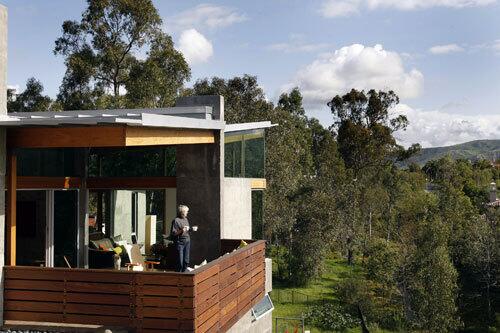
Architect Ruth Hasell’s emphatically modern home in Orange County isn’t just a rejection of the phony French castles and wannabe Tuscan villas proliferating in nearby housing developments. It’s also her vision of what more homes in Southern California could -- and should -- look like. “I wanted the house to be a vivid reflection of built work that was Californian and a direct response to our time and to this place,” she says, “not a dim reflection of a misremembered style from another lifetime and another continent.” (Allen J. Schaben / Los Angeles Times)
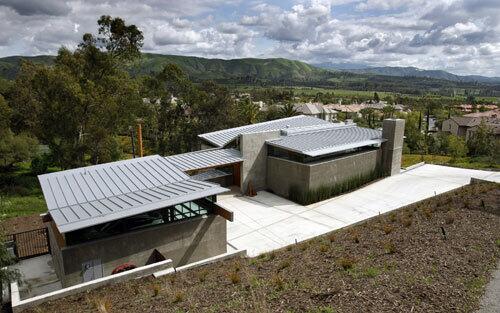
Poured-in-place concrete walls. Glued laminated Douglas fir beams. A galvanized steel roof. Hasell’s new house is the work of an unabashed modernist, one who served as project architect for
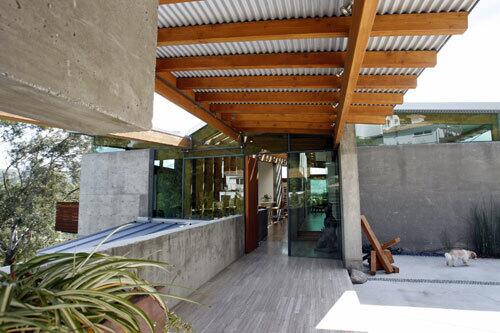
The entrance to the house. In developing a floor plan, Hasell divided the building: She and her husband, Gary, live upstairs, which contains the library, kitchen and dining and living areas. The master bedroom also is upstairs, on one side of the thick concrete wall that runs through the center of the house. The lower level of the house, which unfolds down the slope, can be adapted as necessary. The bottom floor has a separate entry and can serve as guest quarters for the couple’s visiting children. During the economic downturn, it has been an office for Hasell’s firm. (Allen J. Schaben / Los Angeles Times)
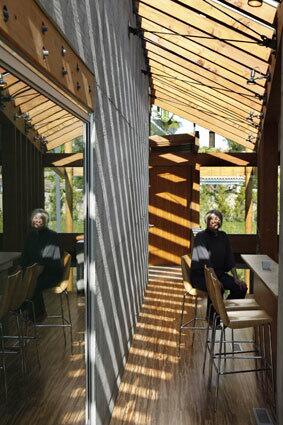
Hasell sits by the kitchen’s breakfast counter, near a central concrete wall that divides the upper floor. In winter, the wall absorbs the sun’s heat through a skylight and warms the house at night. In summer, the concrete cools overnight and helps to keep indoor temperatures comfortable during the day. (Allen J. Schaben / Los Angeles Times)
Advertisement
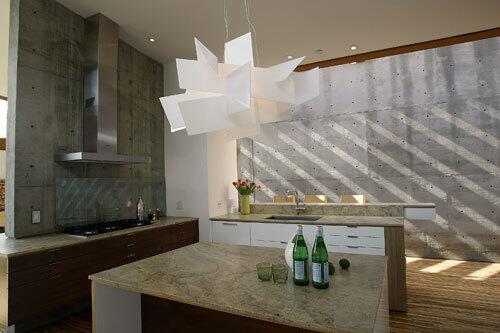
The reverse view: the kitchen, with a lighting fixture from Foscarini, the breakfast counter in the background and glass backsplash behind the cook top. When the Hasells decided to build their dream home, they searched for a location where they could indulge their taste for modern architecture. They settled in the unincorporated area north of Tustin known as Lemon Heights because the quiet neighborhood of renovated 1960s ranch houses has no design review board. Free from constraints, Hasell designed a three-bedroom, three-bathroom house that harnesses natural light, conserves energy and enhances comfort throughout 3,300 square feet dug into the eucalyptus-shaded slope. “The place feels large but is actually much smaller than a lot of the houses around us,” husband Gary says. “It fits the site really well and feels like it belongs.” (Allen J. Schaben / Los Angeles Times)
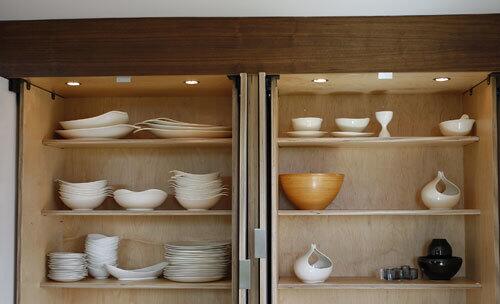
One of Hasell’s trademarks is streamlined, multifunctional storage. In the kitchen and dining area, white lacquered pivot doors open to reveal an illuminated buffet for instant entertaining space. (Allen J. Schaben / Los Angeles Times)
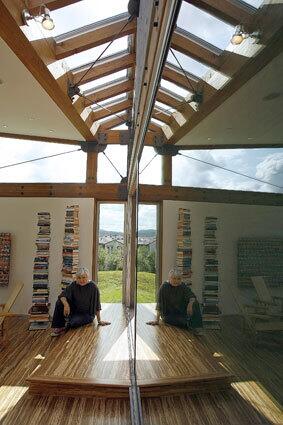
The floors are tiger bamboo, a vividly patterned type of the sustainable material. (Allen J. Schaben / Los Angeles Times)
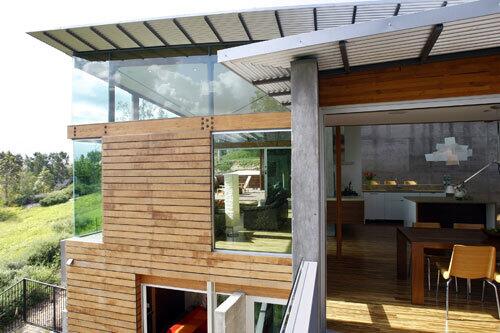
“The house is like a landscape- and weather-viewing instrument,” she says. “We watch the light and shadows change during the day and from season to season. We open the doors, and breezes come through. When it rains, we watch water bubble off the roof. From the moment we wake up, we feel directly connected to the environment.” (Allen J. Schaben / Los Angeles Times)
Advertisement
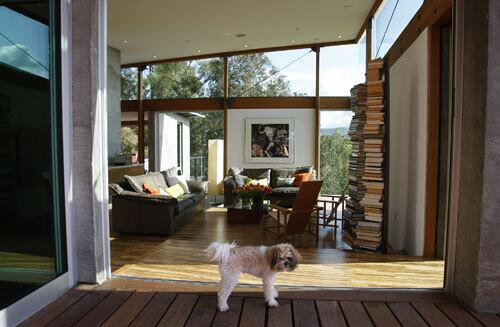
“People go to a lot of lengths putting in crown molding to make their homes look like something else,” says Hasell’s husband, Gary. “But our beams and struts are an important and elegant part of the design.” (Allen J. Schaben / Los Angeles Times)
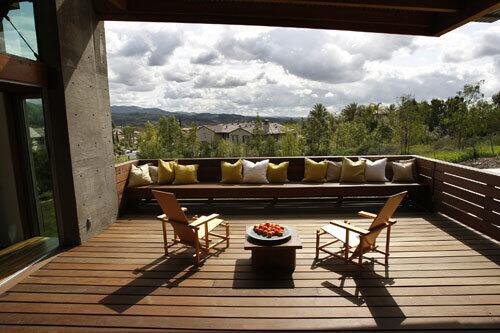
The covered ipe-wood porch off the master bedroom faces southeast, affording front-row seats at sunrise. (Allen J. Schaben / Los Angeles Times)
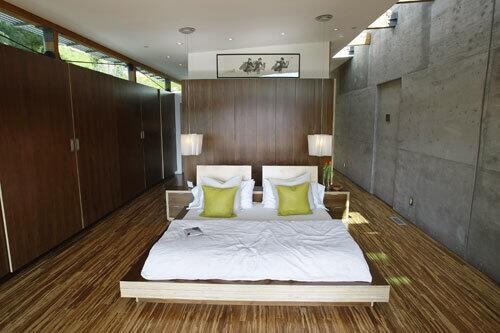
For the master bedroom, Hasell borrowed ideas from Japanese homes where every inch counts. The cubical storage behind the bed conceals a pullout vanity and mirror. (Allen J. Schaben / Los Angeles Times)
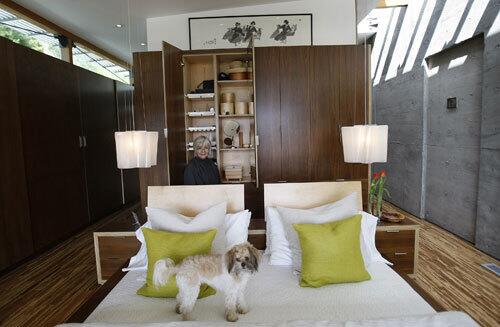
Behind the bed: abundant storage. (Allen J. Schaben / Los Angeles Times)
Advertisement
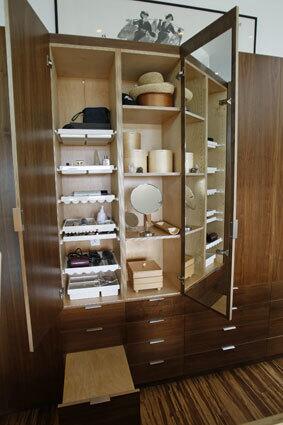
Detail of the master bedroom’s cabinetry. (Allen J. Schaben / Los Angeles Times)
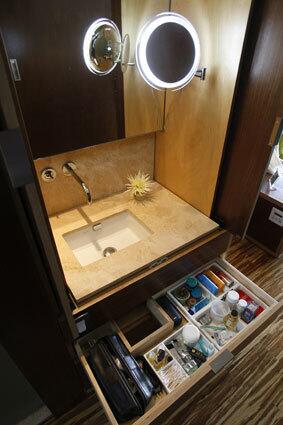
Drawers in the master bath were designed to maximize storage while accommodating the plumbing. A sink, a shower and a toilet are each compartmentalized. “The Japanese usually have only one bathroom, but they separate everything,” Hasell says. “So, like they do, one of us can use the shower while the other uses the toilet.”
Around the other corner, the washer and dryer are tucked behind convenient slide-away panels. “Designing the laundry area into the walls was a way to make what would have been just circulation space functional space,” she says. Countertops and walls were done in the same earthy Peruvian travertine. (Allen J. Schaben / Los Angeles Times)
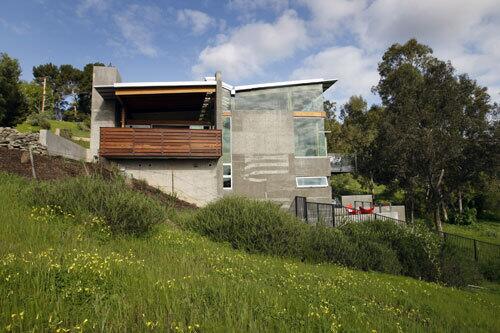
“Southern California is known for its adventurousness, its offbeat ideas and creative industries,” Cuff says. “But while people might like the way
Hasell says her goal was timeless appeal: “I wanted to build what’s appropriate for our climate, our latitude, our expansive way of living that is Californian.”
Click here to see more home tours. (Allen J. Schaben / Los Angeles Times)



